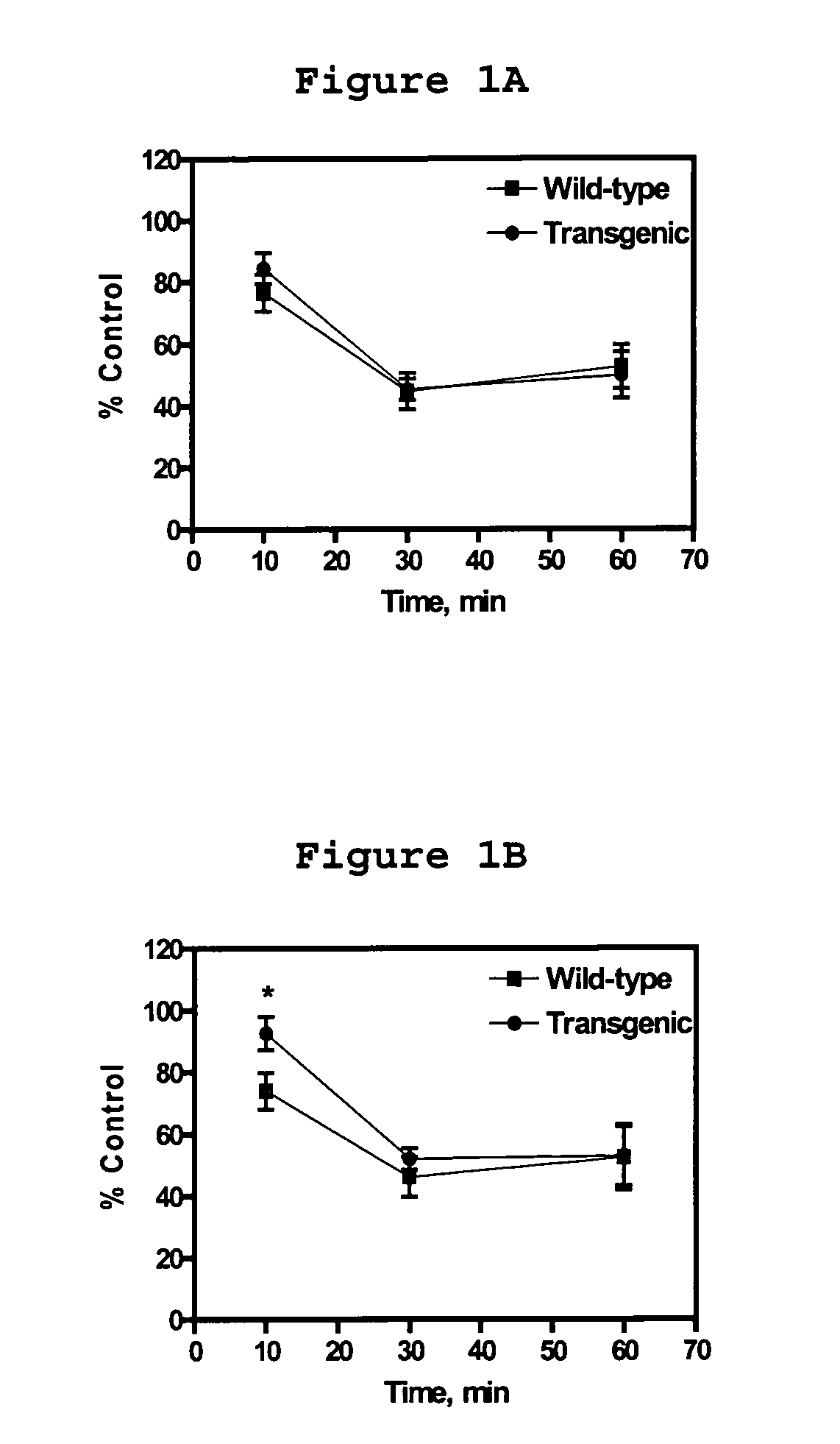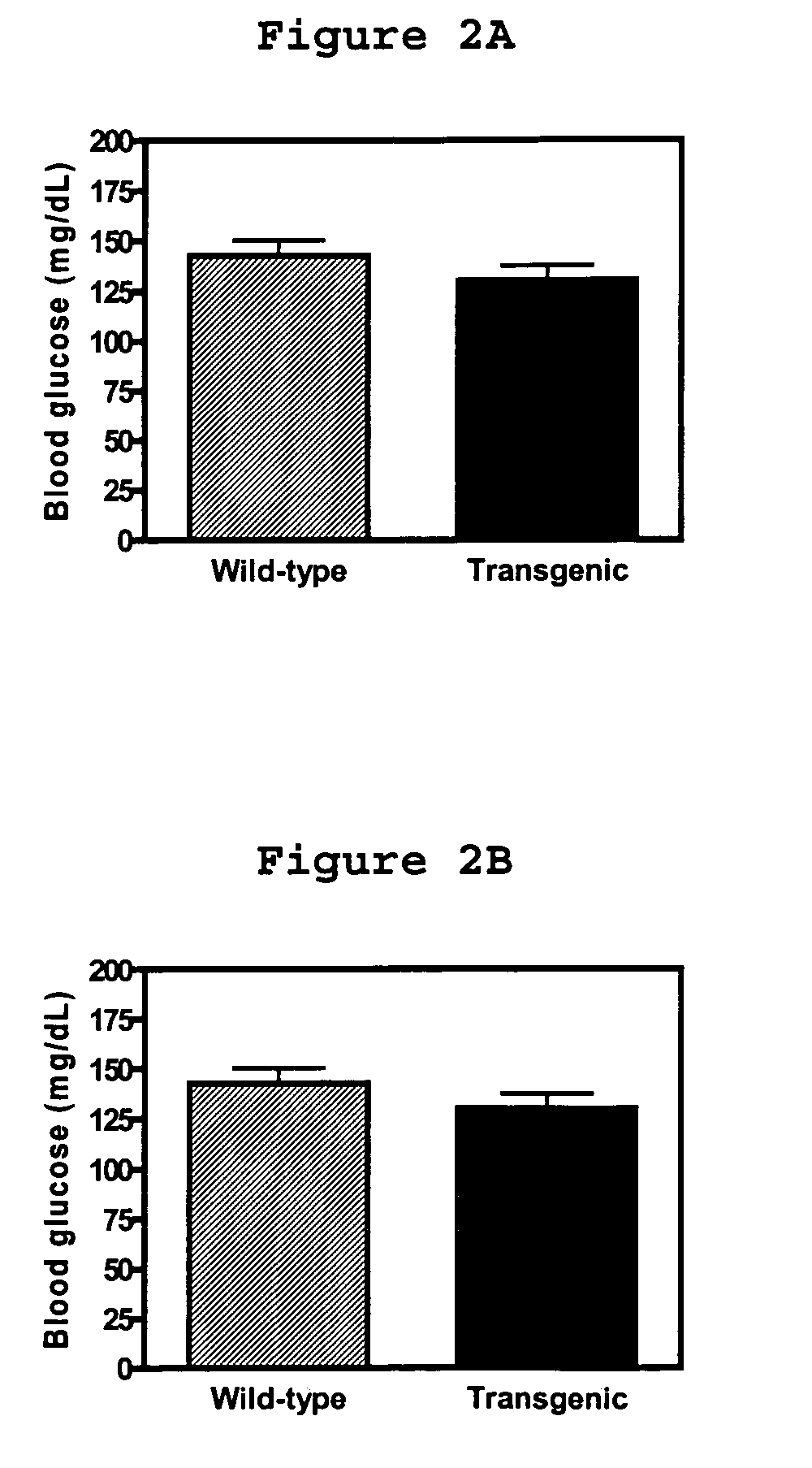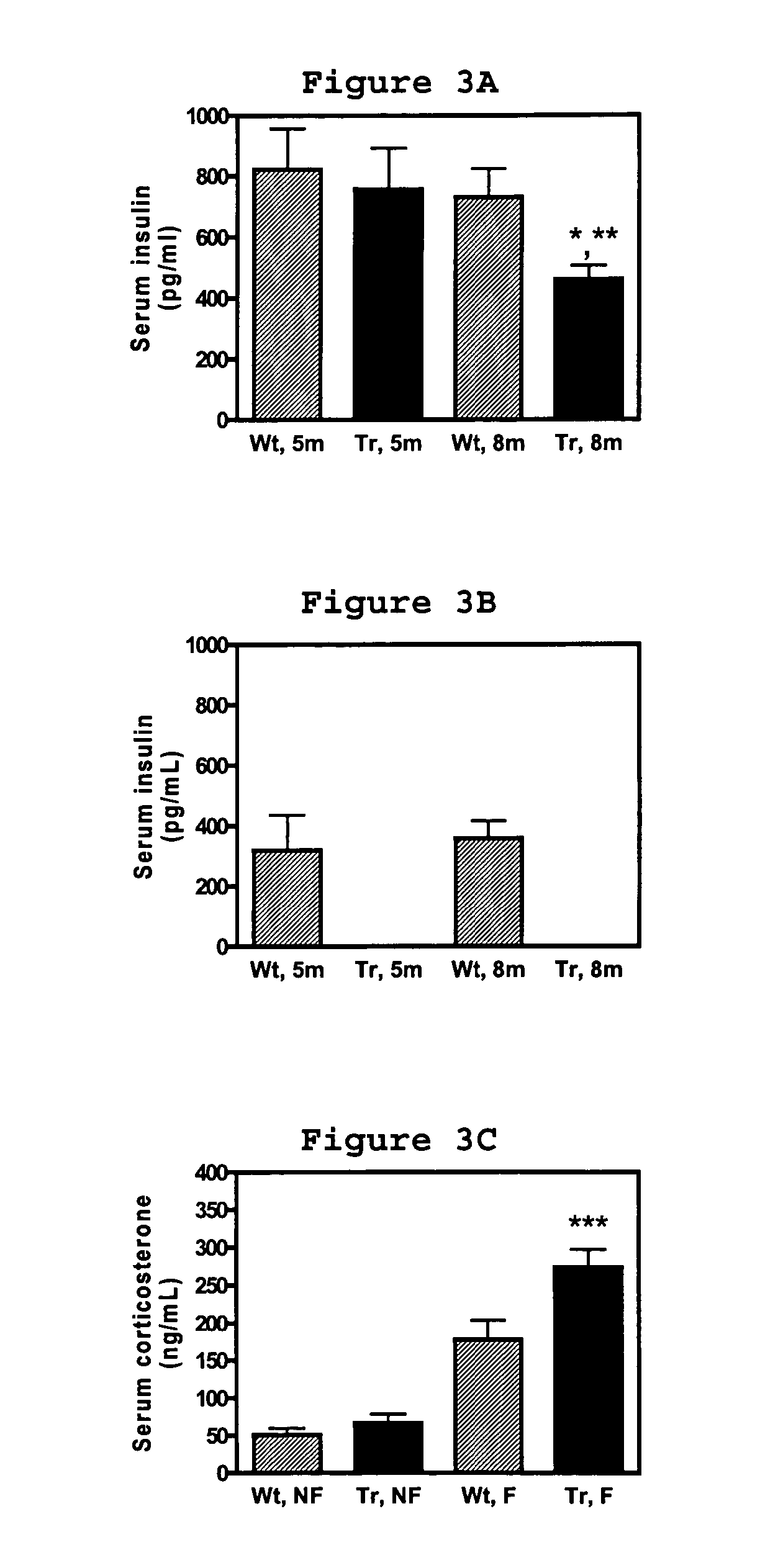Methods and materials for treating, detecting, and reducing the risk of developing Alzheimer's Disease
a technology for alzheimer's and brain, applied in the direction of biocide, drug composition, metabolic disorder, etc., can solve the problems of inexorable decline in cognitive functions and short-term memory function impairment, poor sleep patterns, and inability to detect alzheimer's disease, so as to reduce insulin resistance, improve spatial learning, and inhibit spatial learning deficits
- Summary
- Abstract
- Description
- Claims
- Application Information
AI Technical Summary
Benefits of technology
Problems solved by technology
Method used
Image
Examples
example 1
Materials and Methods
Male Tg2576 mice and non-transgenic littermates were purchased from Taconic Farms (Germantown, N.Y.). The Tg2576 mice overexpress the 695-isoform of the human amyloid precursor protein containing a double mutation originally identified in a large Swedish kindred (familial AD); spatial learning and memory deficits are evident at 9-11 months of age, prior to the formation of mature amyloid plaques (Kawarabayashi et al., “Age-Dependent Changes in Brain, CSF, and Plasma Amyloid β Protein in the Tg2576 Transgenic Mouse Model of Alzheimer's Disease,”J. Neurosci., 21:372-381 (2001) and Westerman et al., “The Relationship Between Aβ and Memory in the Tg2576 Mouse Model of Alzheimer's Disease.,”J. Neurosci., 22:1858-1867 (2002), which are hereby incorporated by reference). Mice were individually housed in ventilated microisolator cages.
Insulin was administered and glucose was measured using the following procedures. A stock of human insulin (recombinant, 28.7 U.S.P. ...
example 2
Insulin Abnormalities in Tq2576 Mice
That male Tg2576 mice exhibit aberrant stress responses and an impaired ability to regulate glucose levels has been previously demonstrated (Pedersen et al., “Aberrant Stress Response Associated with Severe Hypoglycemia in a Transgenic Mouse Model of Alzheimer's Disease,”J. Mol. Neurosci., 13:159-165 (1999) (“Pedersen”), which is hereby incorporated by reference). Furthermore, it has been shown that the mice are glucose intolerant, indicated by higher peak glucose levels relative to wild-type mice following a glucose challenge (Mattson et al., “Cellular and Molecular Mechanisms Underlying Perturbed Energy Metabolism and Neuronal Degeneration in Alzheimer's and Parkinson's Diseases,”Ann. NY Acad. Sci., 893:154-175 (1999), which is hereby incorporated by reference). To provide evidence of insulin resistance in Tg2576 mice and to determine at what age this occurs, the experiments described in this Example 2 were conducted.
Insulin was administered...
example 3
Rosiglitazone Normalizes the Stress Responses of Tg2576 Mice
To provide evidence for a relationship between insulin resistance and aberrant stress responses of Tg2576 mice, the animals were subjected to a diet containing the thiazolidinedione, rosiglitazone, in order to increase insulin sensitivity. The thiazolidinediones act as agonists of peroxisome proliferator-activated receptor-γ (“PPARγ”), which is a ligand-inducible transcription factor that regulates glucose and lipid metabolism (Desvergne et al., “Peroxisome Proliferator-Activated Receptors: Nuclear Control of Metabolism,”Endocr. Rev., 20:649-688 (1999), which is hereby incorporated by reference). The agonists of PPARγ attenuate insulin resistance by improving peripheral insulin sensitivity, and such agonists are currently being used clinically in the management of type 2 diabetes (Wagstaff et al., “Rosiglitazone: A Review of its Use in the Management of Type 2 Diabetes Mellitus,”Drugs 62:1805-1837 (2002), which is hereby ...
PUM
| Property | Measurement | Unit |
|---|---|---|
| insulin resistance | aaaaa | aaaaa |
| amyloid β-peptide | aaaaa | aaaaa |
| resistance | aaaaa | aaaaa |
Abstract
Description
Claims
Application Information
 Login to View More
Login to View More - R&D
- Intellectual Property
- Life Sciences
- Materials
- Tech Scout
- Unparalleled Data Quality
- Higher Quality Content
- 60% Fewer Hallucinations
Browse by: Latest US Patents, China's latest patents, Technical Efficacy Thesaurus, Application Domain, Technology Topic, Popular Technical Reports.
© 2025 PatSnap. All rights reserved.Legal|Privacy policy|Modern Slavery Act Transparency Statement|Sitemap|About US| Contact US: help@patsnap.com



